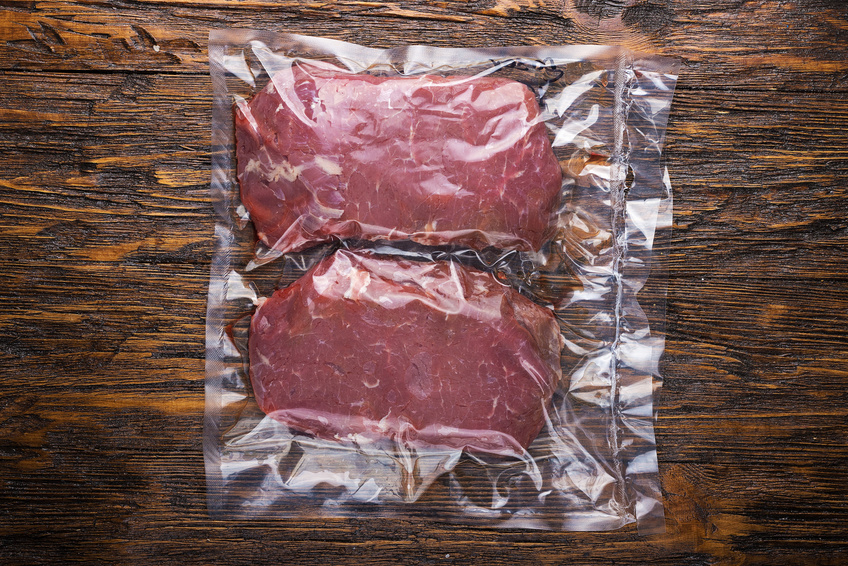
We know when it comes to avoiding histamine in foods, fresh is best. But how do we make sure food is still fresh when it comes to us — especially when trying to get our anti-inflammatory omega-3s through fresh fish?
HISTAMINE & PRESERVATION
Histamine poisoning is often to blame when it comes to foodborne illness. The contaminating bacteria that grows due to improper food handling and storage may be producers of biogenic amines, including histamine. The traditional way these bacteria have been limited in growth is through proper temperature control — either by cooling or freezing — which has been shown to inhibit proliferation.
As a side note, histamine is heat-stable, so cooking will not lower the already formed histamines in the food. It will, however, eliminate the histamine-producing bacteria before they can raise the histamine level of the food.
Histamine can come either from an initial low-quality source of food (already contaminated), or develop during the processing of the food if there is not strict adherence to a “cold chain” –uninterrupted refrigeration below a certain temperature.
When it comes to preservation of fish, quick cooling followed by other measures, such as hydrostatic pressure, irradiation, controlled or modified atmosphere packaging (O2 vs CO2), or food additives has been the approach. The addition of amine oxidizing enzymes or starter cultures has also been used.
Vacuum packaging is a type of controlled atmosphere packaging, which removes the oxygen surrounding the food, increasing its “shelf life”. It also reduces freezer burn!
DOES PACKAGING MATTER?
In September of 2014, foodborne illness broke out in Tainan City in southern Taiwan due to histamine-producing bacteria on milkfish sticks. After testing leftovers from the victims’ homes as well as raw fish sticks from the grocery stores, it was determined that ten different histamine-producing bacteria strains were to blame. Histamine levels were measured in both the leftover fried fish samples and in samples of raw fish from the grocery stores. Results from a good portion of the samples were well over the potential hazard action level for illness and over the U.S. FDA guidelines for scombroid fish.
According to an article published in the Canadian Medical Association Journal,
“Scombroid poisoning occurs after the ingestion of fresh, canned or smoked fish with high histamine levels due to improper processing or storage. First described in conjunction with fish in the suborder Scombroidea (e.g., tuna and mackerel), it has since been described with other dark-fleshed fish (e.g., sardines and anchovies). Scombroid poisoning is one of the most common causes of morbidity associated with fish intake.”
To learn more about scombroid poisoning and histamine, read my post Histamine In Fish Safety Margin Not High Enough Says The WHO
A follow up 2017 study out of Taiwan examined the effects of vacuum packaging versus polyethylene packaging (in air) on milkfish sticks. While storing the fish at a temperature below 15 degrees C lowered the histamine levels in both the polyethylene packaging and the vacuum packaging, the vacuum packaged fish had significantly lower histamine than the polyethylene packaging.
And when the fish sticks that had been stored for 2 months in the freezer (-20 C) and then brought to room temperature (25 C) the vacuum packaged fish had a slower increase in histamine levels compared to the polyethylene packaged fish.
The moral of the story is… If you’re going to add fish to your diet, definitely seek out vacuum packaged to lower your histamine risk.
WHY FRESH IS BEST
Fresh food is always best when it comes to avoiding histamine flares, but it is especially important when it comes to eating fish. And it’s not always that easy to find good sources of fresh fish.
After doing a good amount of research, I have found a supplier of wild-caught fish that is really and truly fresh and safe. Check out my post, Safer Fish For Histamine Intolerance to read or listen to my interview with Randy Hartnell, who spent 20 years working as a fisherman in Alaska before joining Vital Choice Wild Seafood.
If you want to totally forgo all fish for a while and reset your health with a plant-based, low histamine, high antioxidant diet, check out my 28-Day Histamine Reset program.
GARCINIA CAMBOGIA AS INSURANCE?
In Sri Lanka and India, the solution to reducing histamine-producing bacteria in fish has been the addition of garcinia cambogia extract to the fish. This practice lowers the pH and prevents histamine formation.
While there are certainly garcinia cambogia extracts and supplements and teas out there (mostly for weight loss!), I wouldn’t rely on taking them to offset questionable fish. There’s no evidence to show that would actually work. And please only eat fish from reputable sources that are prepared and packaged properly.
——— REFERENCES ————
Kung HF, et al. (2017). “The effect of vacuum packaging on histamine changes of milkfish sticks at various storage temperatures.” Journal of Food and Drug Analysis, 25(4),812-818. Retrieved from: https://www.ncbi.nlm.nih.gov/pubmed/28987357
Lee, YC et al. (2016). “Determination of histamine in milkfish stick implicated in food-borne poisoning.” Journal of Food and Drug Analysis, 24(1), 63-71.
Retrieved from: https://www.ncbi.nlm.nih.gov/pubmed/28911410
Naila, A., Flint, S., Fletcher, G., Bremer, P., & Meerdink, G. (2010). Control of Biogenic Amines in Food—Existing and Emerging Approaches. Journal of Food Science, 75(7), R139–R150. http://doi.org/10.1111/j.1750-3841.2010.01774.x
Stratta, P., & Badino, G. (2012). Scombroid poisoning. CMAJ : Canadian Medical Association Journal, 184(6), 674. http://doi.org/10.1503/cmaj.111031
Thadhani VM1, Jansz ER, Peiris H. (2002). “Effect of exogenous histidine and Garcinia cambogia on histamine formation in skipjack (Katsuwonus pelamis) homogenates.” International Journal of Food Sciences and Nutrition, 53(1), 29-34. Retrieved from: https://www.ncbi.nlm.nih.gov/pubmed/11820094













